*
Help! My roof has become one giant ice dam! I live in a 100-yr old balloon frame house in Chicano with no ave vents, two puny roof vents and a foot of snow and ice on the roof. I installed an attic vent fan but it just seems to pull warm air out of the house. My question is: is it possible to install a vent in the attic wall from the inside? Can anyone recommend a good vent for this purpose? I really don’t want to get up on a ladder for this–just something to make it through this winter. Thanks for your help!
Discussion Forum
Discussion Forum
Up Next
Video Shorts
Featured Story
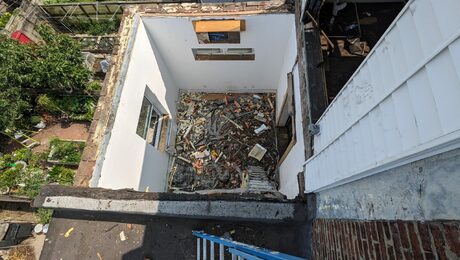
Listeners write in about paint strippers, bricks, and FHB Podcast volume and ask questions about insulating under membrane roofs and whether waterproofing prevents concrete foundations from drying.
Highlights
"I have learned so much thanks to the searchable articles on the FHB website. I can confidently say that I expect to be a life-long subscriber." - M.K.
Fine Homebuilding Magazine
- Home Group
- Antique Trader
- Arts & Crafts Homes
- Bank Note Reporter
- Cabin Life
- Cuisine at Home
- Fine Gardening
- Fine Woodworking
- Green Building Advisor
- Garden Gate
- Horticulture
- Keep Craft Alive
- Log Home Living
- Military Trader/Vehicles
- Numismatic News
- Numismaster
- Old Cars Weekly
- Old House Journal
- Period Homes
- Popular Woodworking
- Script
- ShopNotes
- Sports Collectors Digest
- Threads
- Timber Home Living
- Traditional Building
- Woodsmith
- World Coin News
- Writer's Digest
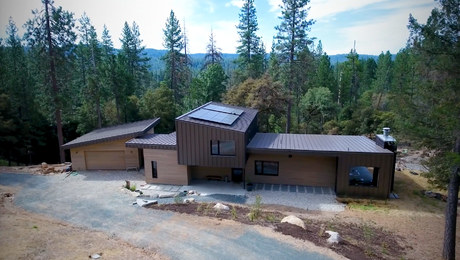

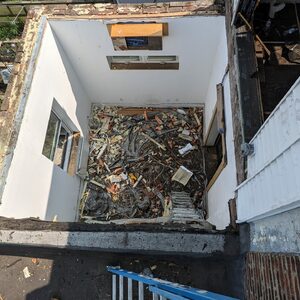
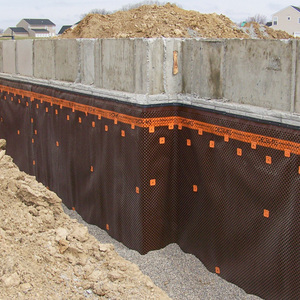
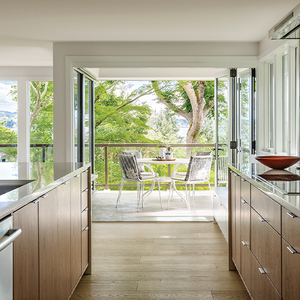













Replies
*
The fact that the fan pulls warm air out of your house ought to give you a clue as to how to solve your roof ice problem. From inside the attic you can seal the ceiling and tops of walls - thus stopping the heat that is causing the ice.
*Yes--I am working on sealing and insulating the attic--but the ventilation is what I need help with--any ideas?
*Victoria,Don't worry about the vents till next summer. They don't have nearly as large an impact on the formation of ice dams as does heat loss into the attic via the hugely porous balloon framing. Get the tops of all those wall bays (exterior walls and any partition walls that are open to the attic at the top) plugged up. I like to use rigid foam cut to fit and foamed in with spray foam, but plastic bags filled with fiberglass and stuffed into the tops of the open wall bays will work too. Don't use fiberglass alone to plug the holes. It'll just filter your heated air nicely before it passes through and on to the roof. Those open wall tops are the single biggest leaks in a balloon framed house. The next biggest culprit is usually the gap between the chimney and the attic floor framing. This must be sealed in a fire-proof manner with metal flashing and fire-rated caulk. Lastly, look for plumbing and wiring penetrations and foam around those.Then put about two feet of cellulose on top of the whole thing. Then wait for summer and add vents if so inclined, but I'll bet that the problem will go away without the vents. Steve
*The one short-term fix I can see that doesn't involve getting up on the roof (or doing majority insulation retrofitting) would be to pull the snow off the roof with one of those extension-handled snow rakes. Then the source of the water (the snow) which forms the ice dams will be gone.Next, slightly longer-term, but more labor intensive step would be zig-zagging heat trace along the eaves to melt channels for the melt water to drain through. A power suck and fire danger, but 20 million homeowners can't be wrong, can they ?The best solution is stop the heat getting out of the house and heating the roof as Steve describes. In addition, I'd look at any ceiling penetrations like for lighting fixtures, attic access, etc. Those should get well sealed or replaced with modern, sealed units.To answer your question: Sure you could chop two holes in the walls, high on the gable ends, from inside the attic. That's the kind of task that Sazall's are great at. It won't be pretty on the outside, but a vent cover and some trim boards next summer will fix that. You'll get more air flow with a fan on one end. Good luck, David
*It is a spectacular season for roof ice in Chicago. Probably obvious to most but while walking last night I was trying to figure out why it was so uneven. Dawned on me that most of these houses are hot water heat with old cast iron radiators and that the longest ice - like eave to ground - was located where there was likely a radiator or where there was a bay projecting. Perhaps these areas need some special attention.
*On my block the most spectacular icicles can be found on houses with gabled rooflines--I'm not sure that's the correct terminology--anyway where the rooflines intersect at the corners of the house--usually with the very corner section jutting into the living space. So at each corner of these houses is a huge section of uninsulated roof/wall with nice warm air radiating straight through to the ice dam. The houses without gabled rooflines have minimal icicles. Plus the radiators in this area are all sitting against walls, in corners or in bay windows as you suggested, so that heat goes straight up and out.
*I think I know what you mean and perhaps cross gabled is a better descriptor of this style. In my neighborhood these are typically steep pitched (8 or 9 or more in 12), stucco, and have a second, cross gable roof over the stair well and usually the third (middle) bedroom.
*I noticed a bunch of ice dams on my way to work this morning. Some icicles must have been 6 ft. long. Chicago isn't alone in this affliction. The worst looking roof was on a post-war ranch house with no overhangs. Oh, Victoria, in case you didn't notice, the Breaktime's spellcheck is no one's friend.Andy
*Yes, Andy, I did notice! What do you suppose an "ave vent" looks like??
*I don't know if any of you remember the thread I was participating in where I described the 2x6 rafter shed-type cathedral-ceiling roof with t&g ceiling that has a history of really bad ice dams. Well, I dense-packed it with cells this summer, and the owners say the room is warmer than it's ever been and there has been not a single icicle so far. And it's been bad for icicles here this year too. But they are having icicles on another face of the roof that is by-the-book contemporary construction: 2x12 rafters with R-30 high-density fiberglass, poly chutes, poly vapor barrier, and soffit vents top and bottom of the shed roof. This is being out-performed by 2x6 rafters and DP cells.I'll have to go take a picture of it.Steve
*Simply reporting. The front page article in yesterday's Chicago Tribune was on roof ice. While a lot of it concentrated on insuarnce claims, they also discussed remedies - both short term and long term. While the standard warnings to not climb on your roof covered with ice and snow, and besides the snow rake and warnings against the hatchet approach, they mentioned socks or fabric tubes filled with salt to melt channles through the ice.They did describe the need to airseal and insulate. Nowhere in the article or graphics was venting even mentioned.
*Well I followed most of the advice--sealed up all holes, tops of walls, around chimneys, wires and plumbing, added a new layer of fiberglass to bring it up to r-49. (Can't do cellulose until we resolve all the electrical issues up there!) Sealed around the hatch with tape until I could install new hatch. Before I made these improvements my attic was at least 60 degrees. Well I went up there today (cloudy, 30 degrees outside) to install the new hatch and it was still 47 degrees. Should I be dejected or elated? Did I spend a week in the attic for nothing? How cold should it be up there to slow down ice dams? Anything I can do short of adding cellulose? How much of an improvement should I have expected? The house does seem warmer, it takes longer to cool off at night. I think. Maybe my next heating bill will cheer me up.It was suggested to me to add a layer of Tyvek or kraft paper on top of the fiberglass to help keep the warm air in, or should I have used kraft-faced insulation for the second layer too, with the kraft side down between the layers of batts? As it is I flipped over a whole attic's worth of insulation to avoid a fire hazard--the last owners installed it paper side up. (That was fun!) (Please don't tell me it was supposed to be that way!) Or should I call 47 degrees close enough until I can get the cellulose up there? I would appreciate any feedback. All the advice I've gotten so far has made so much sense. Thanks very much, signed--depressed in the midwestps could we at least get some snow so I can see if my week in the attic was worth the effort!
*
Help! My roof has become one giant ice dam! I live in a 100-yr old balloon frame house in Chicano with no ave vents, two puny roof vents and a foot of snow and ice on the roof. I installed an attic vent fan but it just seems to pull warm air out of the house. My question is: is it possible to install a vent in the attic wall from the inside? Can anyone recommend a good vent for this purpose? I really don't want to get up on a ladder for this--just something to make it through this winter. Thanks for your help!